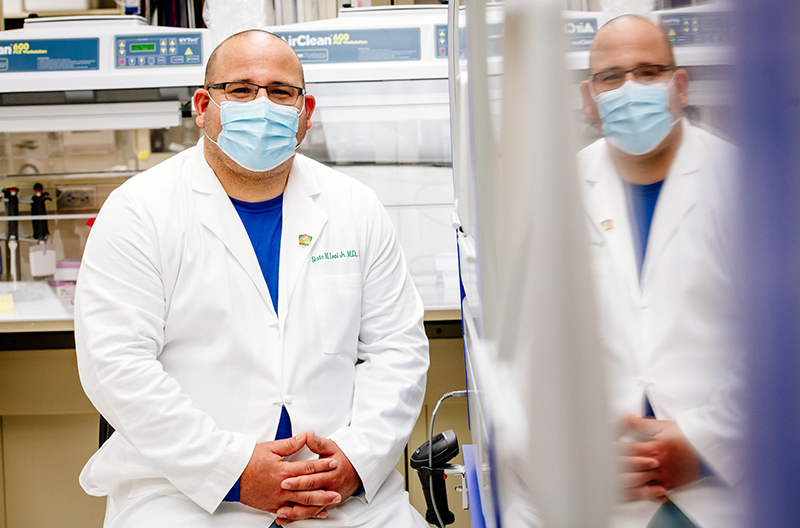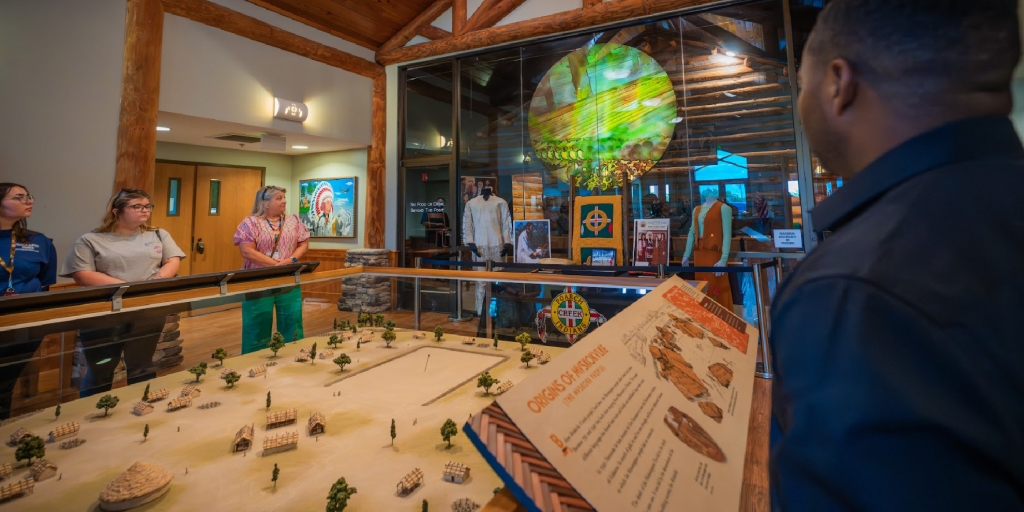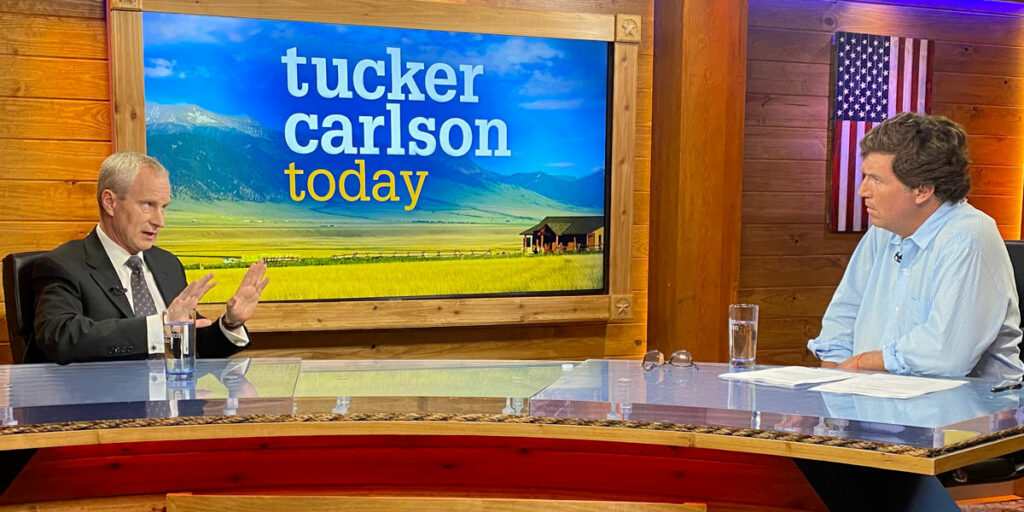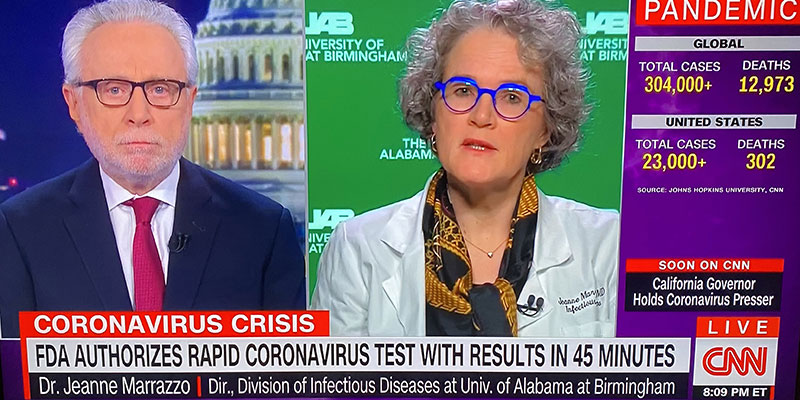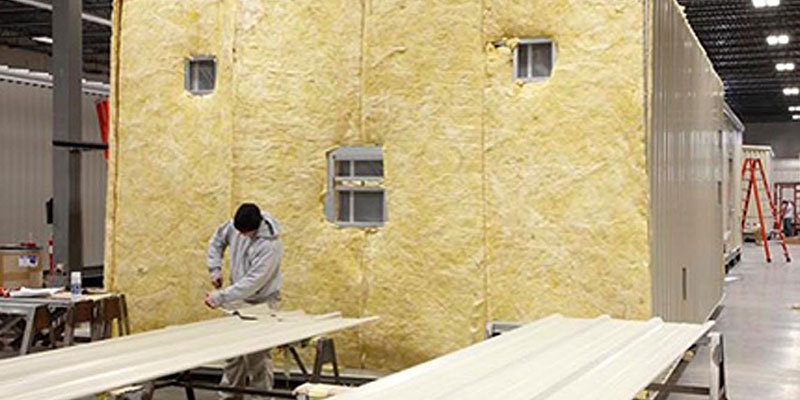A day after the World Health Organization declared COVID-19 a global pandemic, the University of Alabama System made immediate plans to transition to online or alternative instruction and remote work at all three campuses. Gov. Kay Ivey declared a state of emergency, and UAB Hospital prepared patient surge plans and implemented visitor restrictions.
At the very onset of the pandemic, it was clear that historic levels of planning, preparation and collaboration would be critical to success, says UA System Chancellor Finis St. John. The UA System Office swiftly created an internal Health & Safety Task Force dedicated to ensuring the safe fulfillment of the System’s core mission of teaching, research and service. The Task Force, led by UAB medical experts, ultimately developed an operational return plan that became a national model for colleges, universities, corporations and nonprofit organizations.
“Our three campus communities and the employees of the UAB Health System proved throughout this challenging period that, while we are individually distinct, we are altogether stronger,” St. John said. “I am grateful for each person in the UA System and the guidance provided by our Board of Trustees, led by President pro tempore Stan Starnes and his predecessor, Ron Gray.”
While uncertainty became the norm in 2020, one thing is certain: The University of Alabama at Birmingham and UAB Medicine were uniquely prepared to help their students, employees and patients, as well as the city, state, nation and beyond, get through the pandemic.
UAB — and its people — responded quickly, strategically and emphatically. The result: During the worst pandemic in more than a century, Alabama’s largest single employer expanded each area of its mission to advance education, research, innovation and economic development, patient care, and community service. UAB also set a record high for enrollment, improved its S&P financial outlook, and became Forbes’ Best Large Employer in the United States, topping the list of more than 500 public and private corporations, hospitals, universities and Fortune 500 companies across dozens of industries and ahead of the likes of Amazon, Google, Mayo Clinic, Microsoft, NASA, Netflix and Yale University.
What made Forbes’ recognition so meaningful, says UAB President Ray L. Watts, is that it is based largely on whether UAB employees would recommend UAB to friends and family. Forbes honored UAB again in April by naming the university and UAB Medicine No. 4 among America’s Best Employers for Diversity and did so a third time in May with its selection as the No. 4 Best Employer for New Graduates 2021, which made it the top ranking institution in education.
“More than a year ago, we didn’t know what impact the COVID pandemic would have on each of us and the many people we serve,” Watts said. “Those were frightening times, but we rolled up our sleeves and adapted. Throughout a difficult year, the perseverance of our people and their dedication to our vision, mission and values — with the unwavering leadership and support from University of Alabama System Chancellor St. John, the System Office team and the UA System Board of Trustees — have been extraordinary. And the results — what we have been able to do for the UAB community and our city, state and beyond — speak for themselves.”
Fulfilling the mission
The pandemic put UAB’s commitment to its mission and the communities it serves on full display.
“UAB has been an international leader in keeping the public safe and informed throughout the pandemic,” said School of Medicine Dean and Senior Vice President Selwyn Vickers. “We answered the call when our institution’s collective knowledge and expertise was needed more than ever. I can’t thank our people enough for working together so selflessly and demonstrating just how outstanding UAB is as an academic medical center and institution of higher learning.”
UAB launched the state’s first appointment-based mass community COVID testing site in conjunction with the Jefferson County Department of Health. Student and employees from across UAB helped the Alabama Department of Public Health with contact tracing, calling upward of 4,000 cases a month by December 2020.
UAB vaccinated its first person on Dec. 18, 2020, and eventually opened five community-based, mass vaccination sites. By May 2021, UAB had administered approximately 200,000 doses of the vaccine to residents in 62 of Alabama’s 67 counties.
– Alex Morton
UAB’s Minority Health & Health Disparities Research Center worked with community leaders to reach out to educate underserved populations about the safety and efficacy of vaccinations. Those efforts, along with investing roughly $1.4 million a month to operate five community vaccine sites, including at Parker High School in downtown Birmingham, Cathedral of the Cross AOH church in Center Point and at the Hoover Met, enabled UAB to provide vaccines to racially diverse groups of Alabamians, far exceeding the national average of underserved populations vaccinated — bolstering Alabama’s effort.
The School of Medicine’s Fungal Reference Lab in the Department of Pathology has been a focal point for testing for the entire state throughout the pandemic. Because of the lab’s efforts, UAB was among the first academic medical centers in the country to offer in-house COVID-19 testing after it launched its own, extremely accurate laboratory-developed test in March 2020.
The lab, directed by Sixto M. Leal Jr., M.D., Ph.D., has been analyzing 100 COVID-positive samples a week for the Alabama Department of Public Health to help identify which variants are in Alabama. Leal’s lab also worked closely with UAB Hospital labs and private-sector biomedical companies to scale up and support the GuideSafe™ Entry Testing program in 2020. Free COVID-19 testing was made available to students at all Alabama colleges and universities in advance of the 2020 fall semester, resulting in the largest-scale higher-education testing initiative in the nation.
UAB research also played an important role. Remdesivir — widely used to treat COVID-19 — was developed through research conducted within the Antiviral Drug Discovery and Development Center, anchored at UAB. UAB was among the first U.S. sites chosen to conduct preclinical testing of an inhaled monoclonal antibody for COVID-19 that showed therapeutic efficacy in October. Monoclonal antibodies have been widely heralded for keeping high-risk patients out of the hospital and saving lives.
UAB researchers, led by Fran Lund, Ph.D., in collaboration with Altimmune, have found that a single intranasal dose of the COVID-19 vaccine candidate AdCOVID provides sterilizing immunity in the lungs of vaccinated animals. AdCOVID is currently in a Phase 1 clinical trial to test safety and immunogenicity in people, and Altimmune expects to report topline data in June.
-
Sixto Leal directs the UAB Department of Pathology Fungal Reference Lab which worked closely with UAB Hospital labs and private-sector biomedical companies to scale up and support the GuideSafe™ Entry Testing program. More than 75,000 students were tested, making it the largest-scale higher-education testing initiative in the nation. Leal’s lab also analyzes 100 random COVID samples a week for the ADPH and has identified all known variants in Alabama.
UAB offered testing, patient care, and administrative expertise and support to hospitals and health systems across the state, improving outcomes for many Alabamians struck by COVID-19. UAB experts also collaborated with and provided critical public health and infectious disease insights to local and state officials, and also took a lead role in an aggressive public information campaign to increase knowledge and safety. UAB experts kept a high public profile throughout the pandemic, as they were featured in constant local media coverage and thousands of appearances in national and international outlets.
UAB COVID-19 by the numbers
- As of May 27, 2021, UAB has administered more than 207,000 vaccinations to residents in 62 of Alabama’s 67 counties.
- To date, UAB has cared for 4,439 COVID patients in UAB Hospital.
- UAB hosted 5 Vaccination sites.
The patient care demands of UAB Medicine have been significant. UAB Hospital admitted its first COVID-positive patient in March 2020, starting multiple waves of patient surges that continued to stress the system and its clinical care and support teams. Early in 2021, more than 30 percent of patients in UAB Hospital — one of the largest hospitals in the nation — were people with an active case of COVID-19 or those who had recovered from COVID-19 but were still too sick from complications to leave the hospital.
“Our employees overcame great challenges and pushed through personal and professional anxiety and exhaustion to provide world-class care to thousands of patients throughout the pandemic,” said UAB Medicine CEO Reid Jones. “We continued to innovate to best serve patients and really demonstrated why UAB is so vital to all Alabamians.”
A new multidisciplinary Post COVID Treatment Program was developed to help evaluate patients still experiencing COVID-19 symptoms more than three weeks after a positive test to help them find appropriate specialized care.
A team led by Sue Feldman, Ph.D., professor in UAB’s schools of Health Professions and Medicine, developed the daily Healthcheck tool and worked with Google and Apple to develop the GuideSafe exposure notification app made available to all Alabamians. The anonymous app was designed to alert users if they had been exposed to someone diagnosed with COVID-19.
“With the great challenges we were facing as a university and health system, it would have been easy to turn inward and just try to solve our own problems,” Watts said. “But that’s not who UAB is. Improving outcomes for all Alabamians is our mission and responsibility, and the pandemic showed just how much that’s in our DNA with the high-impact programs we undertook.”
Meeting the needs of students, faculty and staff
A key tenet of UAB’s positive momentum before the pandemic was a shared commitment to shared governance, which only strengthened as the university shifted to remote learning in March 2020.
Students, faculty and staff — from the undergraduate and graduate student government associations to the faculty senate and staff council — were invited at the request of President Watts and Provost Pam Benoit to share important insights in key committees and workgroups.
The dialogue led to new and enhanced resources that helped members of the campus community safely continue their education and jobs — from a robust e-learning platform to guide remote learning to processing grants and other crucial university business.
Prior to the pandemic, UAB’s eLearning and Professional Studies office supported faculty and staff with instructional design services, media production services, academic technology tools and training, and continuing education/professional studies offerings. In March 2020, when UAB courses moved online in response to the pandemic, the eLearning team assisted faculty with course design and technology through online workshops and one-on-one assistance.
“Our eLearning and Professional Studies team developed a dynamic approach to helping students and faculty in the online learning environment. In partnership with talented faculty, this team designed quality face-to-face, hybrid and online courses and programs. The effort of the eLearning and Professional Studies team — and its collaboration with our dedicated faculty — was indicative of UAB’s efforts as a whole across our entire enterprise.”
– UAB Provost, Pam Benoit
“Our eLearning and Professional Studies team developed a dynamic approach to helping students and faculty in the online learning environment,” Benoit said. “In partnership with talented faculty, this team designed quality face-to-face, hybrid and online courses and programs. The effort of the eLearning and Professional Studies team — and its collaboration with our dedicated faculty — was indicative of UAB’s efforts as a whole across our entire enterprise.”
“We are fortunate to work with a faculty body so adept and creative,” said Pam Paustian, Ph.D., associate provost for Academic and Learning Technologies. “It was an incredible team effort based on a shared commitment to our students.”
In July, an Incident Command Committee was established to monitor data and how effective UAB was in implementing operational and safety strategies. “The idea was to bring together campus leaders with access to resources and people to address any areas where additional support may be needed,” said Katie Crenshaw, J.D., UAB chief risk and compliance officer, who chairs that committee.
UAB increased and promoted mental health resources, provided free personal protective equipment, made childcare options available to employees and subsidized it, made vaccines available to employees and the community within Alabama Department of Public Health guidelines, and made COVID-19 testing free and conveniently available to employees. The UAB-developed sentinel testing program developed with GuideSafe was also made available to other institutions across the state.
Ultimately, Watts says, UAB’s efforts saved lives and livelihoods.
“We have worked tirelessly to leverage our resources, expertise and talent and made a big difference in safeguarding the health of people and our economy,” Watts said. “It is incredibly humbling and gratifying to talk to people who continue to thank me for all UAB has done. It is equally gratifying to know the UAB family is proud of what we have all been able to do together for each other and our community.”
Our COVID year from UAB on Vimeo.
Photography and videography: Andrea Reiber, Laura Gasque, Jeff Myers, Carson Young, Andrea Mabry, Steve Wood, Lexi Coon and Amanda Chambers





